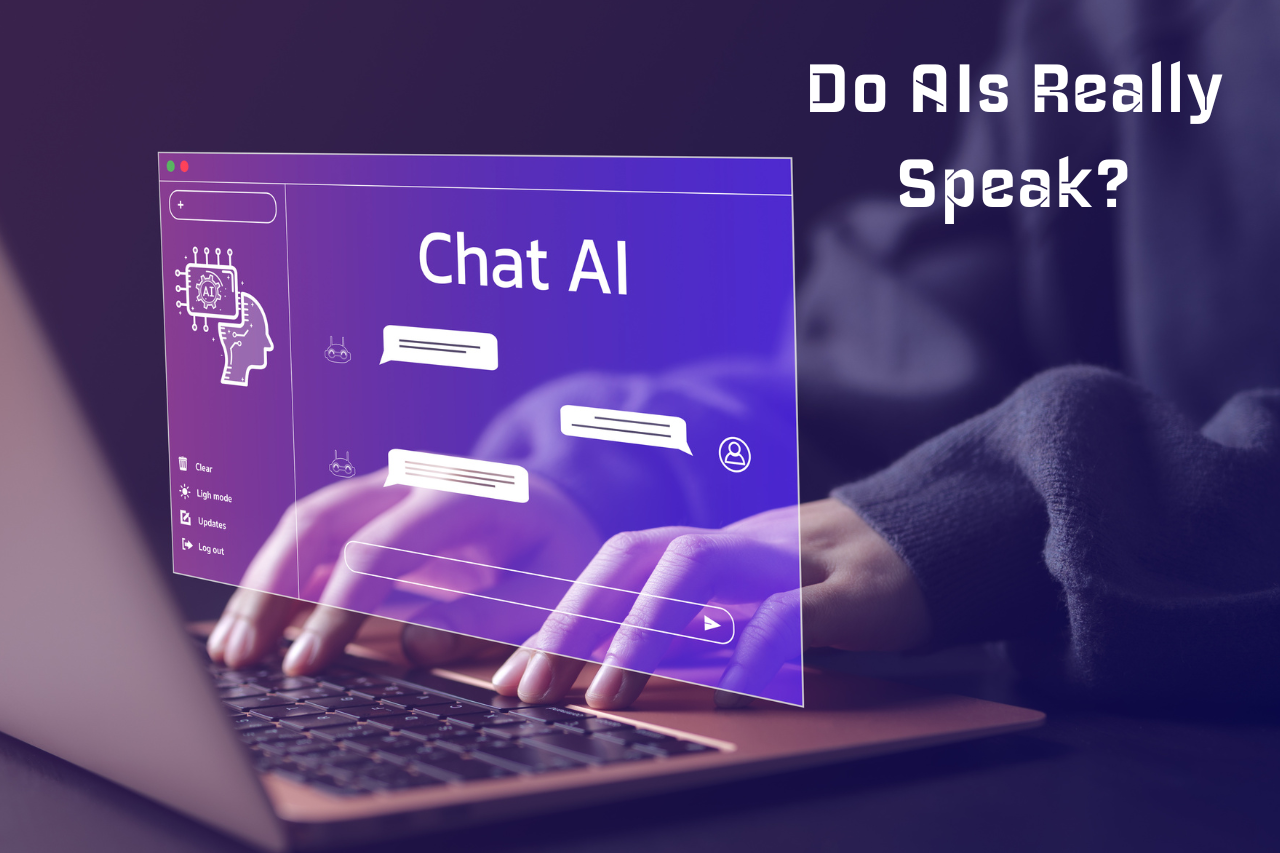🤔Is AI Language Real? Uncovering the Truth Behind Artificial Speech
💬 When Words Feel Real — Even When They’re Not
Imagine someone you love walking toward you and softly saying:
“I’ll always be there for you.”
These words don’t just sound sweet — they carry emotional weight. They’re more than language. They’re a promise, an emotional act that reassures, connects, and commits.
But now imagine a machine — an AI chatbot — saying the same phrase.
Does it feel the same?
Does it mean the same?
As we grow more dependent on conversational AI like ChatGPT, Gemini, and other intelligent language models, it’s time we ask a deep and important question:
Do AIs really speak — or are they just pretending to?
🧠 What Is Real Speech? The Human Meaning Behind Language
To explore this, we must turn to a powerful, yet often overlooked, field of linguistics known as linguistic pragmatics, and more specifically, the speech act theory developed by philosophers J. L. Austin and John Searle.
📘 Speech Act Theory: Language as Action
Speech act theory reveals something profound:
Language is not just about representing facts — it’s a way of doing things in the world.
According to Austin, when we speak, we don’t merely transfer information — we act. For example:
- Saying “I apologize” isn’t just stating regret — it’s performing an apology.
- Saying “I promise” isn’t a fact — it’s a commitment.
Austin breaks speech down into three acts:
- Locutionary Act – the basic act of uttering words (e.g., “I promise to help you.”)
- Illocutionary Act – the intended function behind the words (e.g., making a promise).
- Perlocutionary Act – the effect those words have on the listener (e.g., making someone feel reassured).
🧩 Searle’s Contribution: Categorizing Human Speech
John Searle, a student of Austin, expanded on this idea and classified speech into five categories:
- Assertives – statements, descriptions, affirmations.
- Directives – commands, requests, questions.
- Commissives – promises, threats, offers.
- Expressives – apologies, thanks, congratulations.
- Declarations – acts that change reality (e.g., firing someone, naming a ship).
Searle emphasized that context and intention are key to real communication. Without intention, speech is hollow — like a stage performance without a script, or a voice without a soul.
💻 Do AI Systems Like ChatGPT Truly Speak?

So, let’s return to AI.
ChatGPT and similar models can generate text that fits all five speech act categories:
- They assert facts (e.g., “The sky is blue.”)
- They direct (e.g., “Please restart your computer.”)
- They promise (e.g., “I’ll help you with that.”)
- They apologize (e.g., “I’m sorry for the confusion.”)
- They declare (e.g., “This concludes our session.”)
But — and here’s the crux — AI lacks intention.
There’s no emotional stake, no understanding, no meaning behind those words.
Even when an AI says, “I’ll always be here for you,” it doesn’t intend to be. It’s not making a promise. It’s executing a statistical pattern, not a social commitment.
🧠 Syntactic Illocution: The Appearance of Speech Without the Substance
What AI performs is something scholars call syntactic illocution — the structure of speech without the underlying intention.
It’s like watching a movie actor cry — it looks real, it sounds real, but it isn’t authentic. The emotion isn’t theirs. Similarly, AI-generated speech may seem thoughtful or emotional, but it’s not rooted in belief, desire, memory, or emotion.
In short:
AI doesn’t “mean” anything. It simulates meaning.
🎭 The Paradox: Machines That Move Us
But here’s where things get complicated — and emotional.
Even if AI lacks intention, its words can still impact us deeply.
This is what Austin called the perlocutionary effect. AI’s responses can calm us, make us laugh, give us comfort. For many, the words feel personal. And that illusion can lead people to think the AI “understands” — even when it doesn’t.
So we face a paradox:
AI speech lacks intention, but still moves people.
It raises ethical, emotional, and philosophical questions about human-machine relationships, digital empathy, and what it really means to “communicate.”
⚖️ Human Language vs. AI Language: What’s the Difference?
Let’s compare:
| Feature | Human Language | AI-Generated Language |
|---|---|---|
| Intentionality | Yes – shaped by thoughts, emotions, context | No – driven by algorithms and probabilities |
| Emotional Grounding | Deeply felt and socially embedded | Simulated based on training data |
| Understanding | Based on life experience and empathy | Based on pattern recognition and token prediction |
| Social Context Awareness | Strong and adaptive | Limited and artificial |
🚫 AI Isn’t Lying — It’s Performing
It’s important to note:
AI isn’t deceptive. It doesn’t know it’s not real. It doesn’t know anything. It isn’t trying to manipulate — it simply generates the most likely response based on data.
It is a performer of syntax, not a speaker with soul.
🧭 Final Thoughts: Machines Talk — But They Don’t Mean It
So, do AIs really speak?
No! not in the way humans do.
They simulate speech, they mimic meaning, they echo our language without ever grasping its depth. They perform language beautifully — but without understanding, without intent, and without emotional grounding.
Until machines can form intentions, feel emotions, and understand consequences — if that’s ever possible — they will remain just that:
Syntactic actors in a world built for meaning.
👉 Want to learn more?
🌐 Explore TechTitans.cloud

